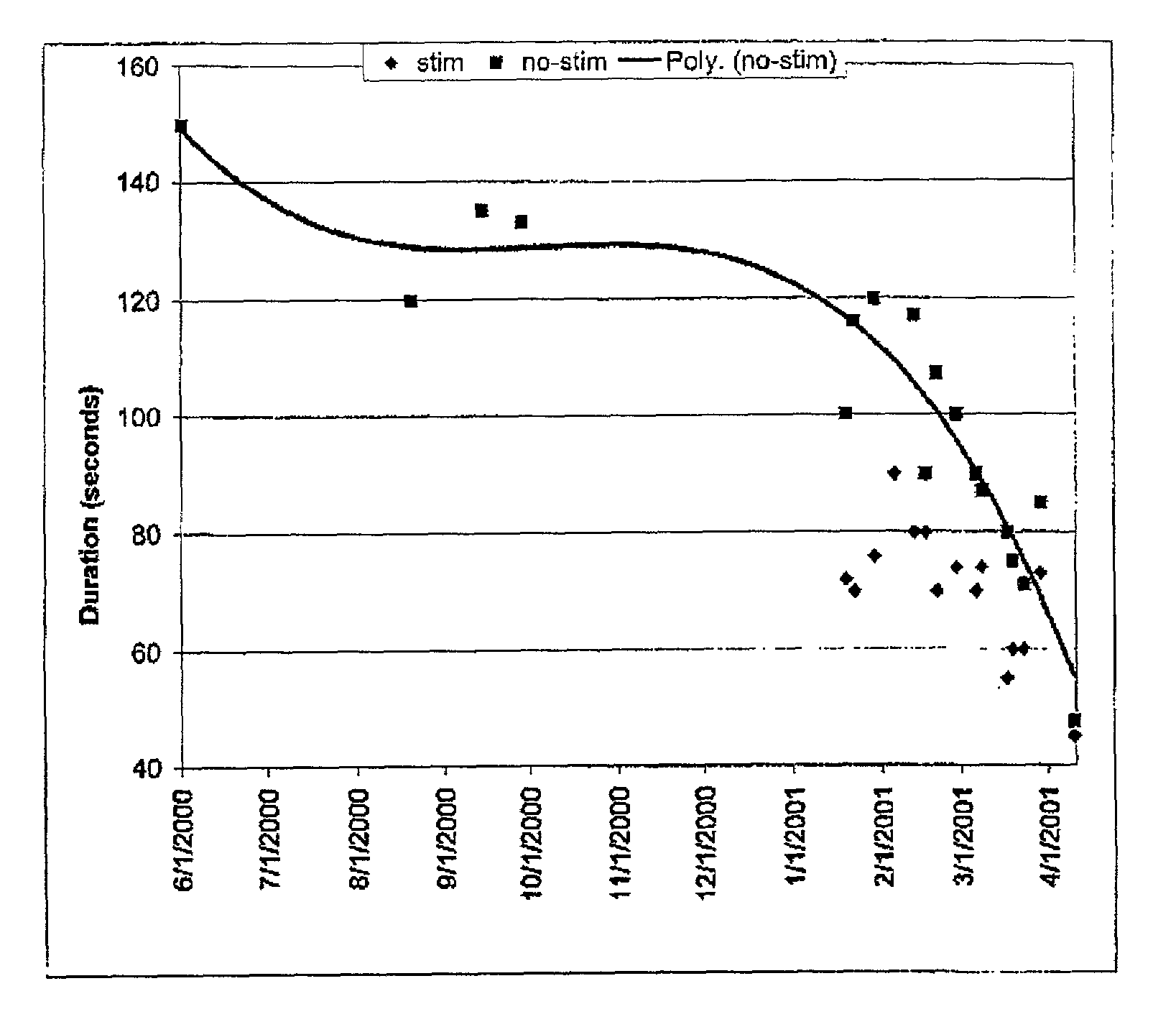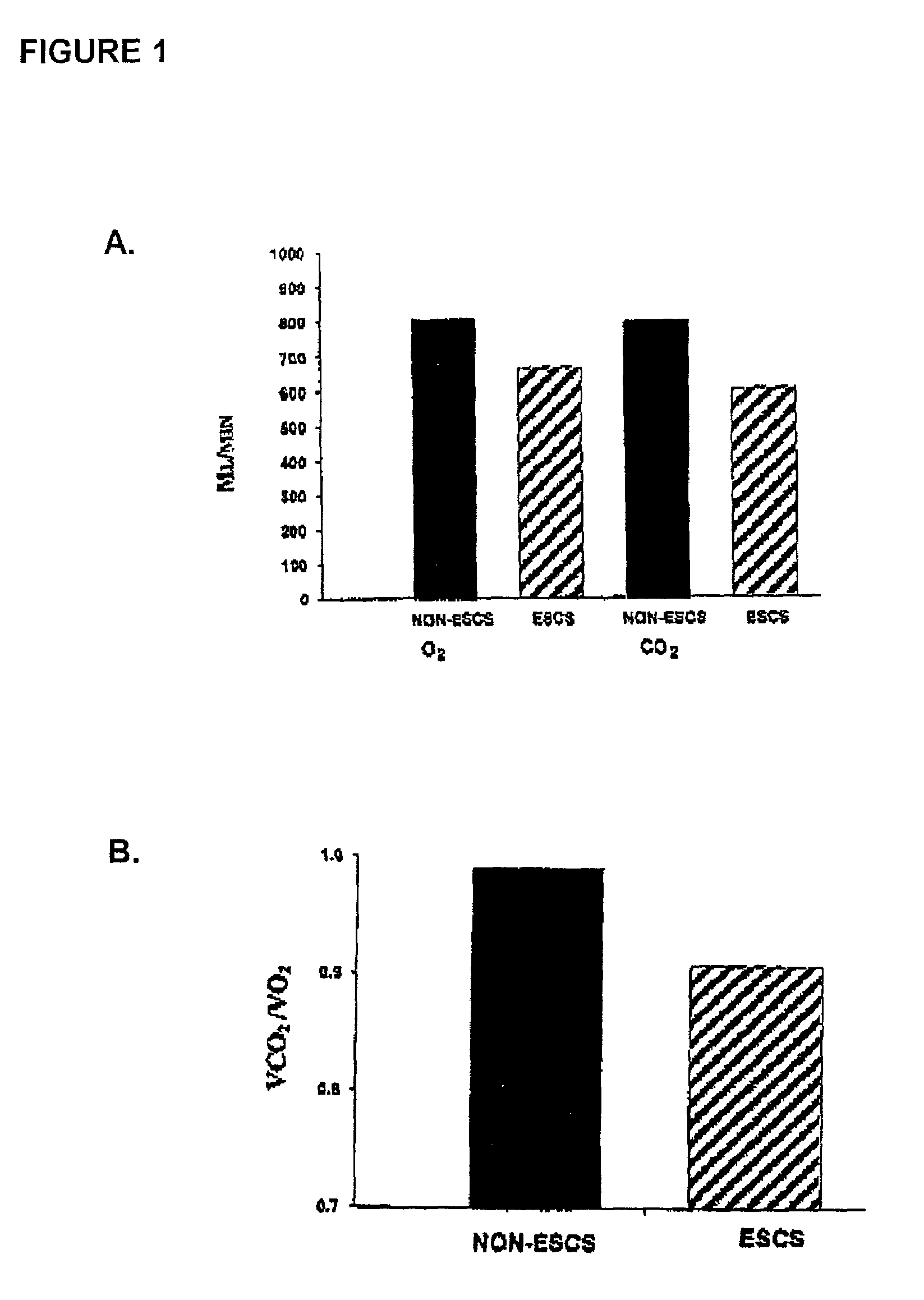Method for restoring gait in individuals with chronic spinal cord injury
a technology for spinal cord injuries and individuals, applied in the field of restoring gait in individuals with spinal cord injuries, can solve problems such as incongruous functional ambulators at home or within the community, and achieve the effect of reducing stimulus patterns
- Summary
- Abstract
- Description
- Claims
- Application Information
AI Technical Summary
Benefits of technology
Problems solved by technology
Method used
Image
Examples
Embodiment Construction
[0016]In general, the present invention is directed to a method for restoring gait in individuals with chronic spinal cord injury. The method for restoring functional ambulation in subjects having incomplete spinal cord injuries includes the step of providing partial weight bearing therapy until a subject reaches a plateau in locomotion rhythm generation followed by the step of electrically stimulating the spinal cord with an implanted stimulation device. After implantation of the stimulation device, gait training is performed with electrical epidural stimulation generated by the stimulating device. Gait training with electrical stimulation may include providing partial weight bearing gait training on a treadmill with EES to investigate stimulus patterns, transitioning from partial weight bearing gait training on a treadmill with EES and over ground EES with a walker to further refine stimulus patterns, and achieving full weight bearing independent stepping over ground without a har...
PUM
 Login to View More
Login to View More Abstract
Description
Claims
Application Information
 Login to View More
Login to View More - R&D
- Intellectual Property
- Life Sciences
- Materials
- Tech Scout
- Unparalleled Data Quality
- Higher Quality Content
- 60% Fewer Hallucinations
Browse by: Latest US Patents, China's latest patents, Technical Efficacy Thesaurus, Application Domain, Technology Topic, Popular Technical Reports.
© 2025 PatSnap. All rights reserved.Legal|Privacy policy|Modern Slavery Act Transparency Statement|Sitemap|About US| Contact US: help@patsnap.com



